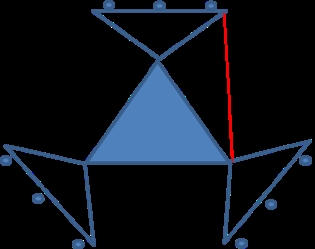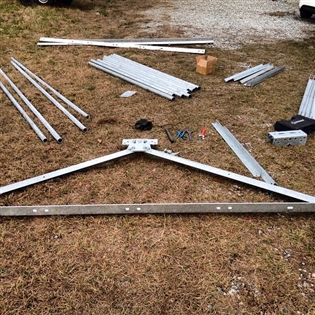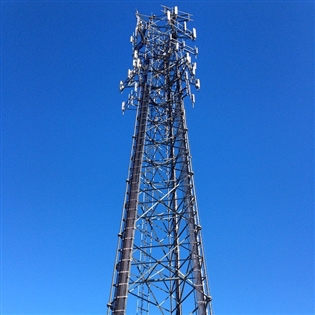Staff Answer

Jun 22, 2015 - 02:20 PM
Tower mounts for cell antennas are triangle shaped mounts that attached to each of the 3 tower legs. The design looks something like this (hopefully this drawing makes it to you intact). In this drawing the blue triangle is the tower and the white triangles are the tower mounts. The small blue dots represent antennas. Each tower mount triangle represents a sector of the antenna array. This is illustrative of an average macro cell tower arrangement, 3 tower mounts, with 3 antennas on each mount. The sector mounts are named Alpha, Beta and Gamma (or A,B,C if lettered). The sector closest to North is called A or Alpha, the next sector clockwise is B sector or Beta and the last sector still going clockwise is C or Gamma sector. These sector mounts are getting larger because they have to hold larger antennas and remote radio heads, diplexers and amplifiers. Because of this, the sector mounts frequently have a stiff arm, tie back arm or stabilizer arm added that attaches to the face of the mount and to a different tower leg than the mount back is attached to. The stabilizer arm, shown here in red, helps prevent the mount from twisting an moving. For simplicity sake, I only added one stabilizer arm. 
What sector mounts look like when they are being assembled on the ground.

Looking at the face of sector mounts from a nearby tower: 
Finally, count the sector mount levels - How many carriers are on the tower?
The answer is 5 in this case! It is important to note though that in some cases there may be mounts on the tower but no antennas on the mount. Alternatively, some wireless service providers will install 2 sectors on one mount at one height (rad center) and 1 sector at one mount on another height on the tower.
Source:





Add New Comment